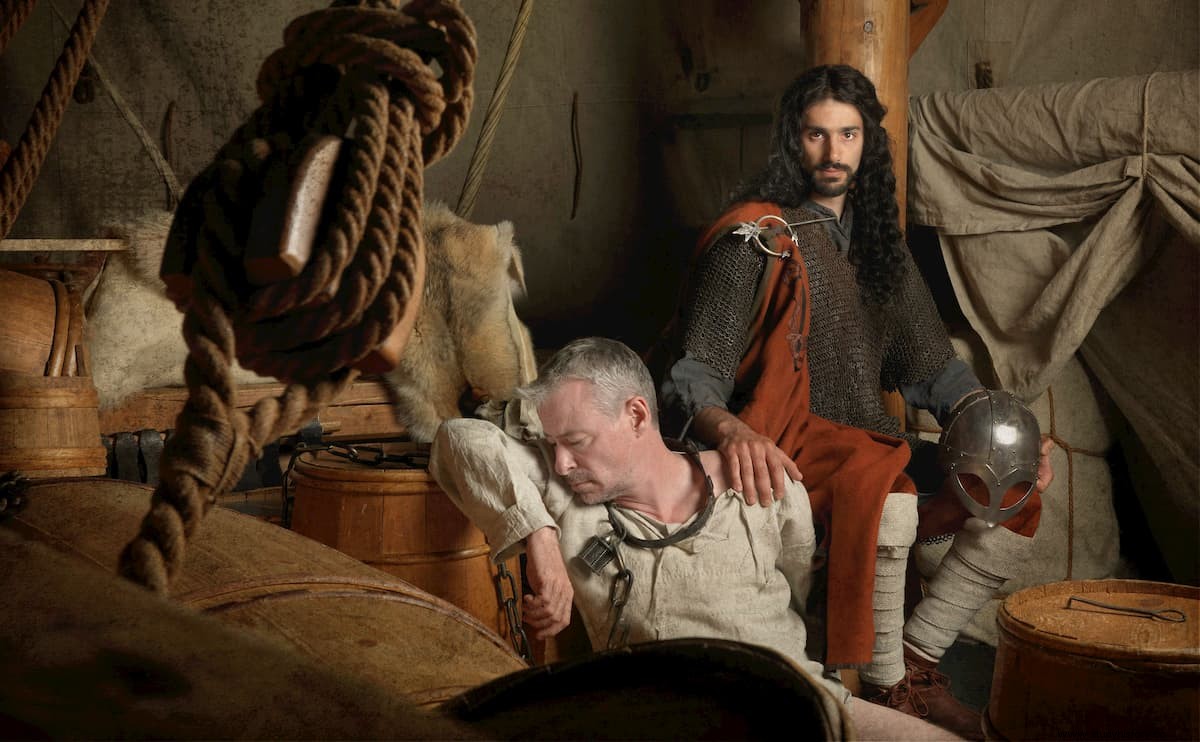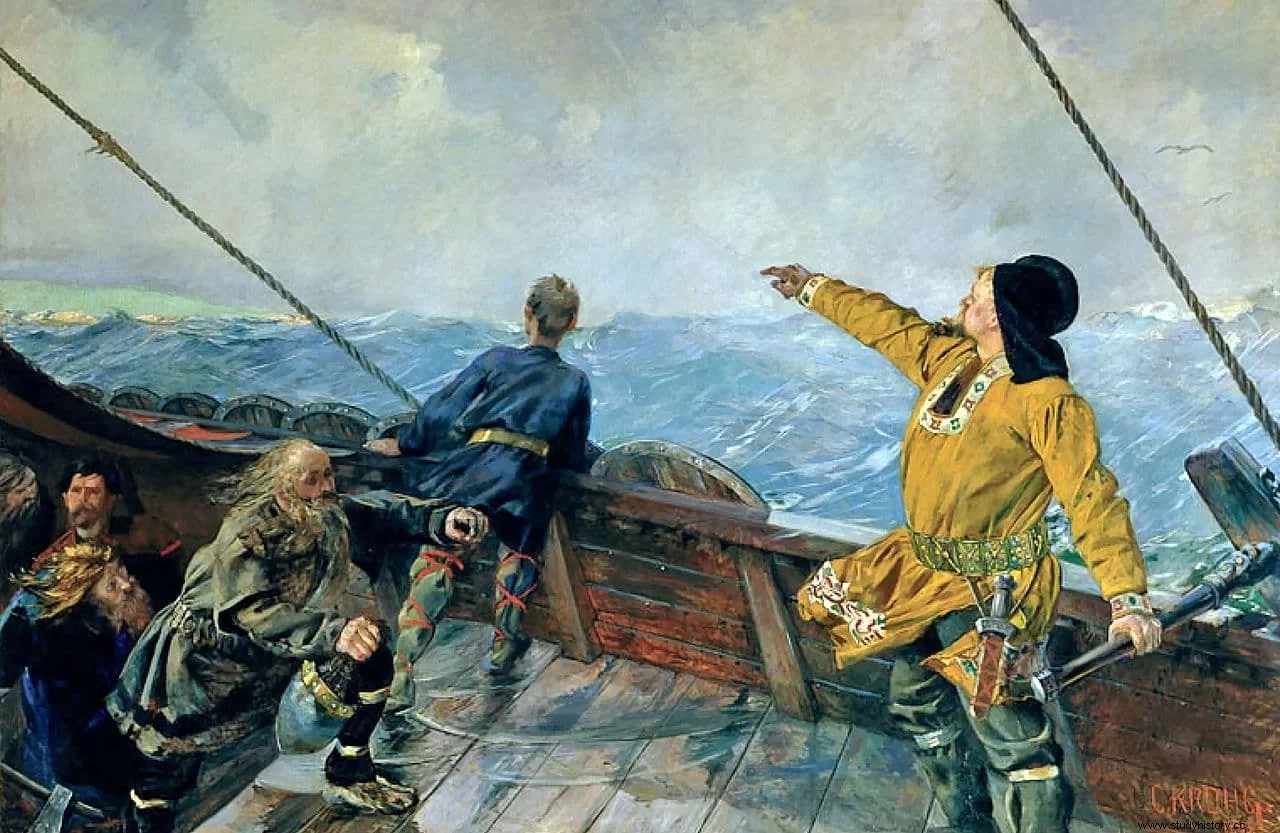Invaders, pirates, warriors… history books taught us that the Vikings were predators who traveled by sea from Scandinavia to plunder and raid populations throughout Europe and beyond.
Now DNA sequencing of more than 400 Viking skeletons from archaeological sites scattered across Europe and Greenland is yielding results that will rewrite the history books. Some of these results show that:
- Skeletons from famous Viking burial sites in Scotland were actually local people who may have assumed Viking identities and were buried as Vikings.
- Many Vikings had brown hair, not blond.
- Viking identity was not limited to people with Scandinavian genetic ancestry. The study shows that the genetic history of Scandinavia was influenced by foreign genes from Asia and southern Europe before the Viking Age.
- The genetic legacy in the UK has left the population with up to 6% Viking DNA.
The six-year research project, published in Nature (September 16, 2020), debunks the modern image of Vikings. It has been led by Professor Eske Willerslev, Fellow of St John's College, University of Cambridge and Director of the Lundbeck Foundation Center for Geogenetics at the University of Copenhagen.
According to Willerslev, we have this image of well-connected Vikings mixing with each other, trading and raiding to fight kings all over Europe because this is what we see on TV and read about in books – but genetically we've proven for the first time it wasn't that kind of world. This study changes the perception of who really was a Viking – no one could have predicted that these major gene flows into Scandinavia from southern Europe and Asia occurred before and during the Viking Age .
The word viking comes from the Scandinavian term vikingr which means pirate . The Viking Age generally refers to the period from AD 800, a few years after the first recorded raid, to 1050, a few years before the Norman conquest of England in 1066. The Vikings changed the political and genetic course of Europe and beyond :Cnut the Great became King of England, Leif Eriksson is believed to be the first European to reach North America – 500 years before Christopher Columbus – and Olaf Tryggvason is credited with bringing Christianity to Norway. Many expeditions included raids on monasteries and cities throughout Europe's coastal settlements, but the goal of trading goods such as fur, tusks, and seal blubber was often the more pragmatic goal.

Professor Willerslev adds that we didn't know genetically how they really were until now. We found genetic differences between different Viking populations in Scandinavia, showing that Viking groups in the region were much more isolated than previously believed. Our research even debunks the modern image of blonde-haired Vikings, as many had brown hair and were influenced by genetic influx from outside Scandinavia .
The team of international academics sequenced the entire genome of 442 Viking Age men, women, children and babies from their petrified teeth and bones found in Viking burial grounds. They analyzed DNA from the remains of a ship burial in Estonia and found that four Viking brothers died on the same day. Scientists have also revealed that male skeletons from a Viking burial site in Orkney, Scotland were not actually genetically Viking despite being buried with swords and other Viking memorabilia.
There was no word for Scandinavia during the Viking Age – that came later. But the study shows that Vikings from what is now Norway traveled to Ireland, Scotland, Iceland and Greenland. Vikings from what is now Denmark traveled to England. And the Vikings from what is now Sweden went to the Baltic countries. However, the Vikings of these three nations only very rarely were they genetically mixed. Maybe they were enemies or maybe there is some other valid explanation. We just don't know.
Dr. Ashot Margaryan, Assistant Professor in the Section of Evolutionary Genomics at the Globe Institute at the University of Copenhagen and first author of the paper, says that we have carried out the largest ever DNA analysis of Viking remains to explore how they fit into the picture. genetics of ancient Europeans before the Viking Age. The results were surprising, and some answer longstanding historical questions and confirm previous assumptions that lacked evidence.

Professor Martin Sikora, one of the main authors of the paper and Associate Professor at the Center for Geogenetics at the University of Copenhagen, said that we discovered that the Vikings were not just Scandinavian in their genetic ancestry, as we looked at genetic influences on its DNA from southern Europe and Asia, which has never been seen before. Many Vikings have high levels of non-Scandinavian ancestry, both within and outside of Scandinavia, suggesting continued gene flow through Europe.
The team's analysis also found that the genetically Picts "became" Vikings without genetically mixing with the Norsemen. The Picts were Celtic-speaking peoples who lived in what is now eastern and northern Scotland during the late British Iron Age and early medieval periods.
Dr. Daniel Lawson, lead author from the University of Bristol, explained that individuals with two genetically British parents who had Viking burials were found in Orkney and Norway. This is a different side of the Vikings' cultural relationship with the raiders.
The Viking Age altered the political, cultural, and demographic map of Europe in ways that are still evident today in place names, surnames, and modern genetics.
Professor Søren Sindbæk, an archaeologist at the Moesgaard Museum in Denmark who collaborated on the work, explained that Scandinavian diasporas established trade and settlement from the American continent to the Asian steppe. They exported ideas, technologies, languages, beliefs, and practices and developed new sociopolitical structures. Importantly, our results show that 'Viking' identity was not limited to people with Scandinavian genetic ancestry. Two skeletons from Orkney that were buried with Viking swords in Viking-style graves are genetically similar to present-day Irish and Scottish and could be the first Pictish genomes ever studied.
Associate Professor Fernando Racimo, also lead author based at the Center for Geogenetics at the University of Copenhagen, underlined how valuable the dataset is for studying complex traits and natural selection in the past. This is the first time we can take a detailed look at the evolution of variants under natural selection in the last 2,000 years of European history. Viking genomes allow us to unravel how selection developed before, during and after the Viking movements across Europe, affecting genes associated with important traits such as immunity, pigmentation and metabolism. We can also begin to infer the physical appearance of the ancient Vikings and compare them to the Scandinavians of today.
The genetic legacy of the Viking Age lives on today in the six per cent of the UK population who have Viking DNA in their genes, compared to 10 per cent in Sweden.
Professor Willeslev concluded that the results change the perception of who Vikings really were. The history books will need to be updated .
